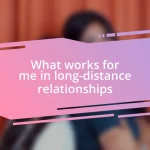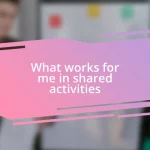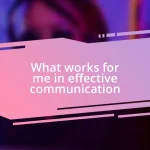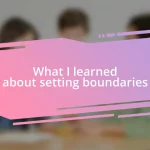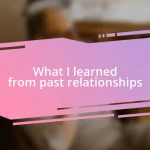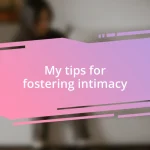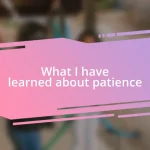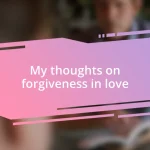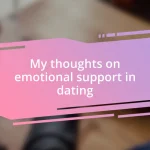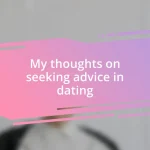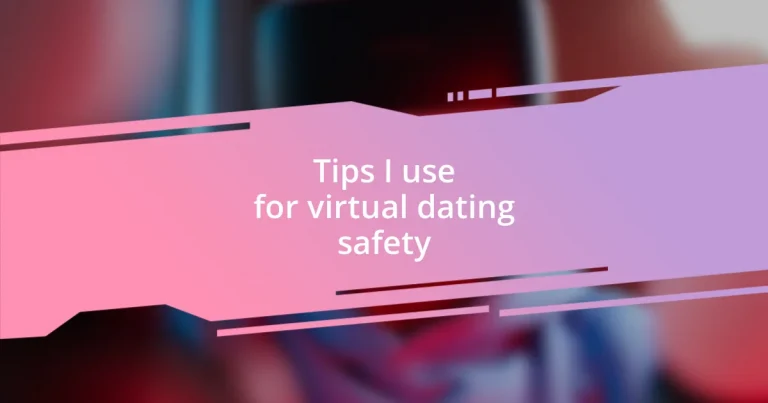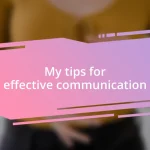Key takeaways:
- Trust your instincts and establish personal boundaries to ensure comfort and safety in virtual dating.
- Use trusted dating platforms with identity verification and strong community guidelines to protect against harassment and fraud.
- Meet in safe, public environments and follow up thoughtfully after dates to foster connections and learn from experiences.
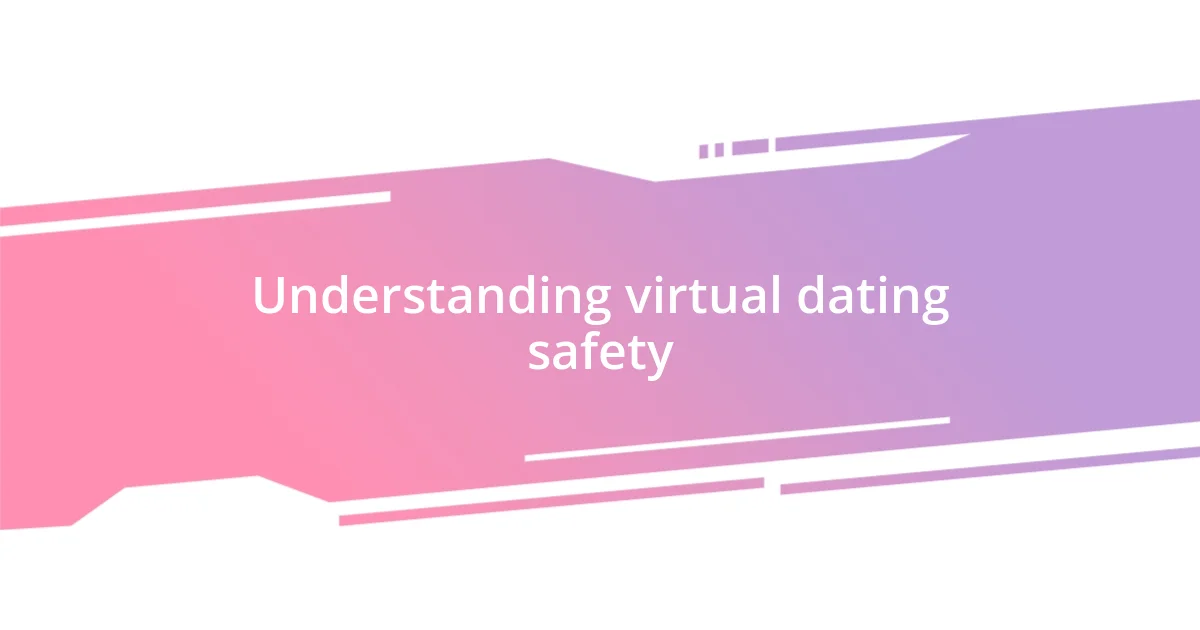
Understanding virtual dating safety
Understanding virtual dating safety extends beyond basic precautions. It’s about creating a comfortable yet secure environment where you can truly connect with someone, all while safeguarding your personal space. When I first ventured into the world of online dating, I vividly recall a situation where I hesitated to share my location too quickly. That moment of uncertainty made me realize how vital it is to trust your instincts; if something feels off, it usually is.
Often, people think they’re invulnerable behind a screen, but vulnerability can creep in unexpectedly. For instance, I once thought I had a strong connection with someone, only to discover they weren’t who they claimed to be. This experience taught me the importance of doing a little research—checking social media profiles or mutual friends can reveal a lot about a person. Have you ever found yourself questioning the authenticity of someone you’ve met online? Trust your gut; it’s an invaluable tool in ensuring your safety.
Engaging in virtual dating means you need to set boundaries, both with yourself and your potential partner. I learned early on that sharing personal information too soon can lead to discomfort. Have you considered what your limits are? Establishing these boundaries not only protects you but also sets the tone for a respectful connection. Remember, it’s perfectly okay to take your time getting to know someone before taking that next step.
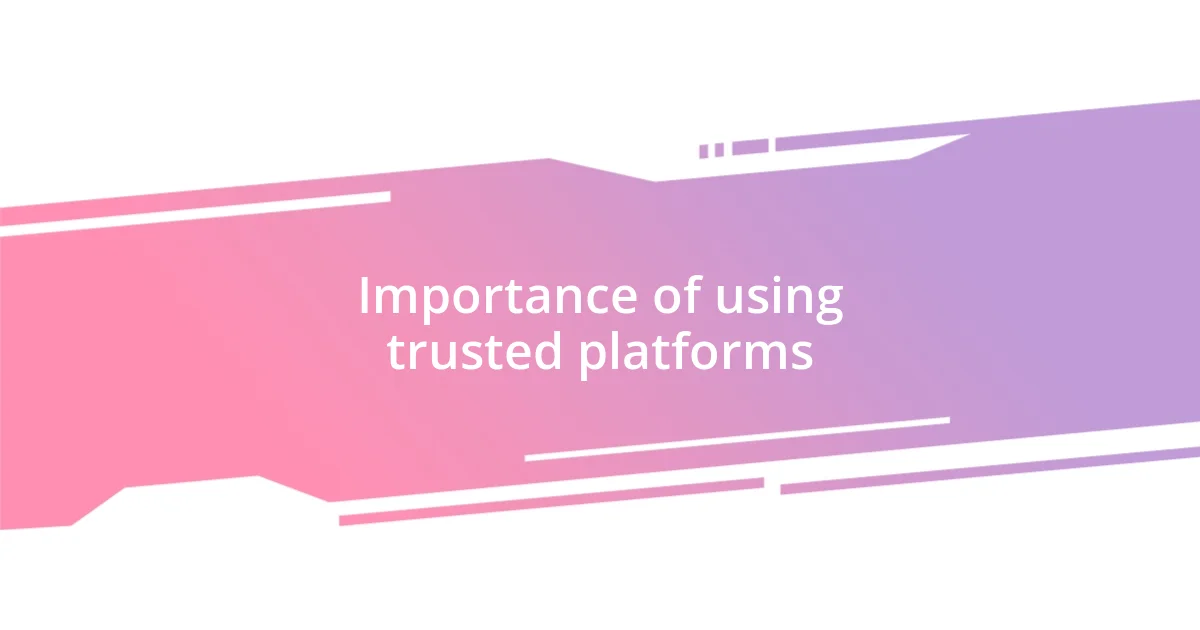
Importance of using trusted platforms
Using trusted platforms is crucial in the world of virtual dating. From my experience, these platforms often come with built-in safety features that help protect users against fraud, harassment, or unwanted interactions. For example, I once stumbled upon a less reputable site, where I quickly realized that the lack of identity verification made me feel uneasy. I knew then that relying on established platforms gave me a sense of security, allowing me to focus on building authentic connections without the worry of deception.
Have you ever thought about how the reputation of a dating app can impact your experience? Trustworthy platforms are often well-reviewed and have community guidelines that promote respectful behavior, which I find incredibly reassuring. I vividly recall a friend who joined a popular dating site only to be bombarded with inappropriate messages. Choosing a platform with a strong community can significantly diminish such experiences, guiding you toward respectful interactions instead.
The presence of verified profiles is another compelling reason to gravitate toward trusted platforms. I remember a particular instance where I matched with someone whose profile was marked as verified. This small badge gave me immediate peace of mind, knowing that they had been vetted through the platform’s procedures. It reminded me that using a trusted site not just facilitates connection, but it also fosters a sense of community, where users look out for each other rather than taking advantage.
| Trusted Platforms | Less Trusted Platforms |
|---|---|
| Identity verification features | No verification, potentially misleading profiles |
| Community guidelines for respectful interaction | Lack of accountability, higher chances of harassment |
| Strong user reviews and support | Poor reputation and user experience |
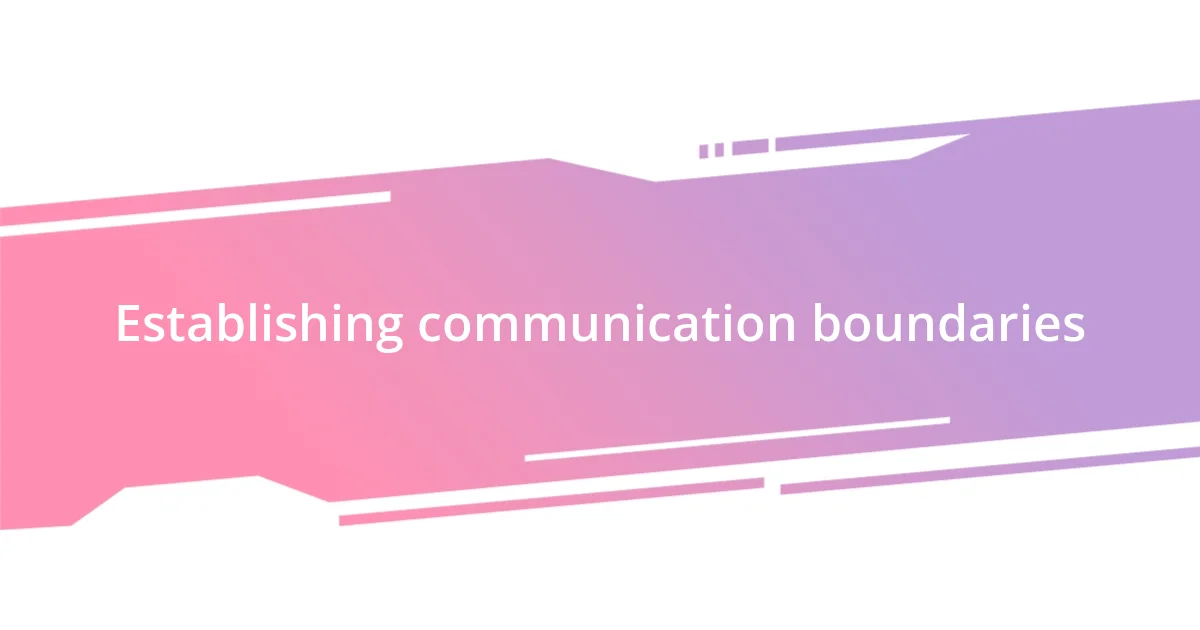
Establishing communication boundaries
Establishing communication boundaries is essential in any virtual dating scenario. I remember the early days of my dating journey when I felt pressured to respond quickly or share more personal details than I was comfortable with. It’s so important to communicate what feels right for you and to stick to those limits. Sharing boundaries not only protects you but also fosters mutual respect and understanding.
Consider these points when setting your own communication boundaries:
- Decide on response times: Let your partner know what your availability looks like to avoid any misunderstandings.
- Limit personal details: Share details about yourself gradually, prioritizing comfort over speed.
- Control your social media sharing: Only connect on platforms where you feel safe, and decide what you’re comfortable sharing publicly.
- Express when you need space: It’s okay to communicate when you need time to think or step back without feeling guilty.
- Encourage open dialogues about boundaries: Invite your partner to share their comfort levels, promoting a balanced conversation about both your needs.
I’ve found that when both partners clearly communicate their expectations, it paves the way for a deeper connection. There was this one time I was chatting with someone online, and instead of diving into heavy topics, we took the time to discuss our communication preferences first. That single conversation led to a more relaxed vibe and, ultimately, a genuine friendship. Establishing these boundaries isn’t just beneficial; it can actually make the dating experience smoother and more enjoyable.
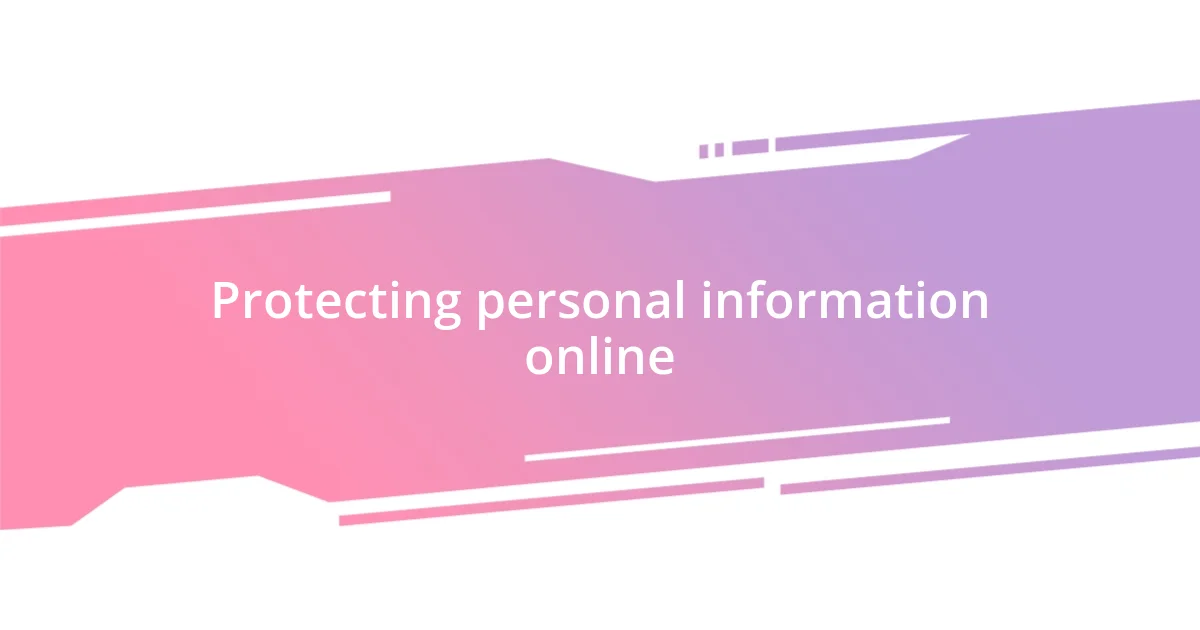
Protecting personal information online
Protecting your personal information online is essential in the realm of virtual dating. From my own experiences, I’ve learned that revealing too much too soon can lead to uncomfortable situations. For example, I once shared my phone number with someone I had just started chatting with, only to receive a barrage of unsolicited texts later. That taught me to hold back on disclosing sensitive information until I felt truly comfortable.
Think about what you share on your profile. Do you really need to list your full name or the exact location where you live? I’ve found that keeping my profile information broad—like stating I live in a city without divulging my neighborhood—helps strike the right balance between intrigue and safety. It’s surprising how little personal detail is necessary to engage someone while still protecting myself from potential misuse of that information.
Password protection is another simple yet effective way to safeguard your personal data. I remember being careless and using similar passwords across different platforms, which only increased my vulnerability. Now, I use unique passwords and a password manager to keep everything secure. This helps me sleep better at night, knowing that I’m taking the necessary precautions to keep my private information under wraps. How about you? Have you considered how your password habits might impact your safety online?
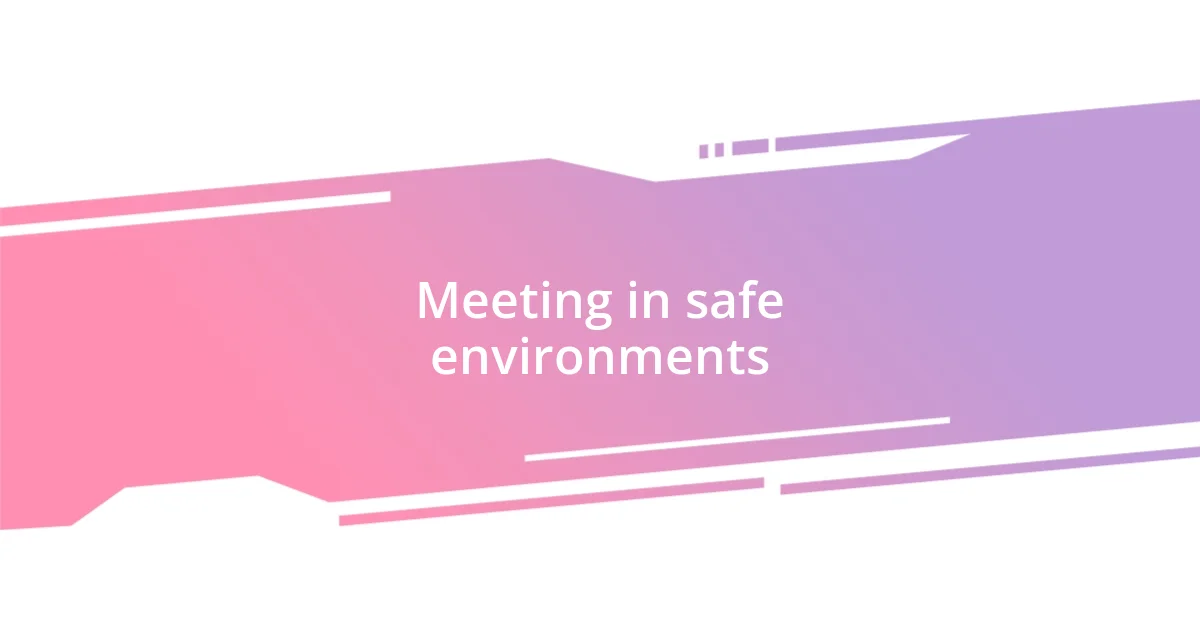
Meeting in safe environments
Meeting in safe environments is crucial when transitioning from virtual conversations to real-life interactions. I’ve often found that choosing a public space, like a café or a park, can make all the difference. There’s something comforting about being around other people that helps ease the nerves, especially when meeting someone for the first time.
Once, I planned a coffee date at a bustling downtown café. It was packed, and right away, I felt more at ease knowing that the place was lively. We could engage without feeling isolated, and I could easily gauge my date’s body language while enjoying the familiar comfort of a busy setting. It’s those little details, like having exit strategies or familiar surroundings, that empower me to feel more in control.
Have you ever considered the time of day for your meetings? I prefer daylight hours for first dates; they can significantly enhance feelings of safety. I remember an evening meetup I had that left me feeling apprehensive—especially as the sun set and the crowd thinned. It taught me to prioritize meeting in well-lit and populated areas. Choosing your environment wisely can transform a potentially awkward situation into a more enjoyable experience, allowing you to focus on the connection rather than your surroundings.
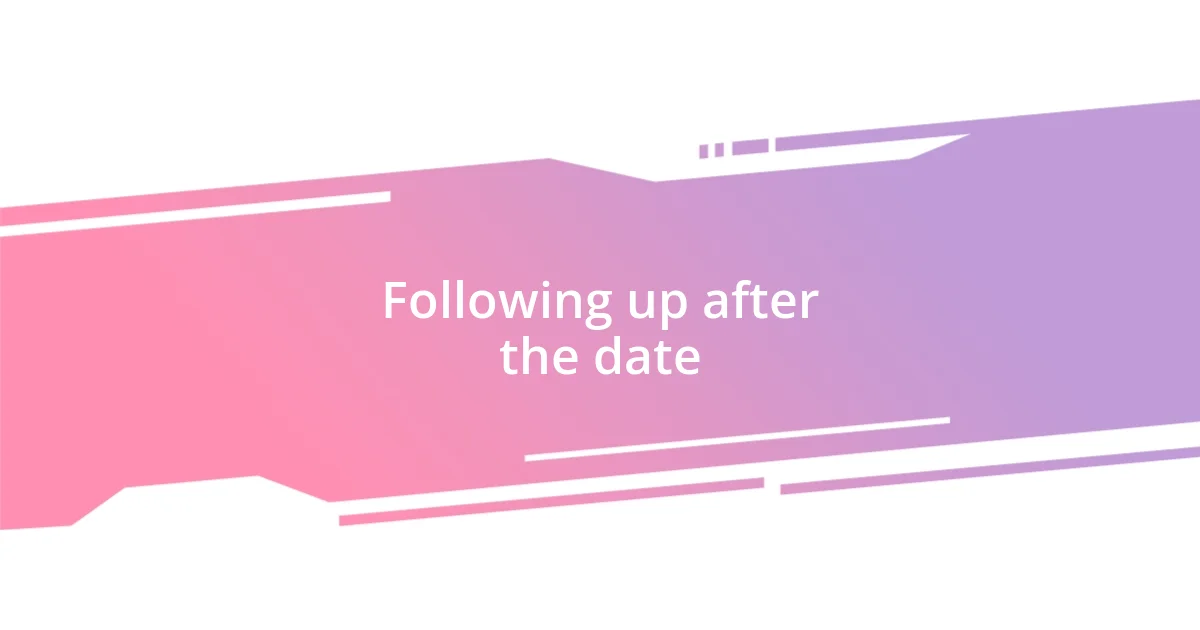
Following up after the date
After the date, I think it’s crucial to follow up thoughtfully. I remember the first time I messaged someone after a date, my heart raced—was I being too eager? But I realized that a simple “I had a great time” could open the door for future conversations. It’s reassuring to know that expressing interest can be comforting for both parties involved.
I always take a moment to reflect on how the date went before hitting send. Did we have shared interests? Was there a natural flow to our conversation? For instance, after one date, I mentioned a book we discussed, which sparked a delightful exchange about our favorite authors. This kind of follow-up doesn’t just reaffirm your interest; it shows that you genuinely care and remember the little details.
On the flip side, not hearing back after a follow-up can be disappointing. I’ve faced that too. Initially, it stung, but I learned to view it as a moving on opportunity. Just because a connection didn’t flourish doesn’t mean it wasn’t valuable—each experience adds to my journey. I ask myself, what did I learn from that encounter? This perspective shift helps me embrace the dating landscape with a more open heart and mind. How do you handle your follow-ups after a date?
